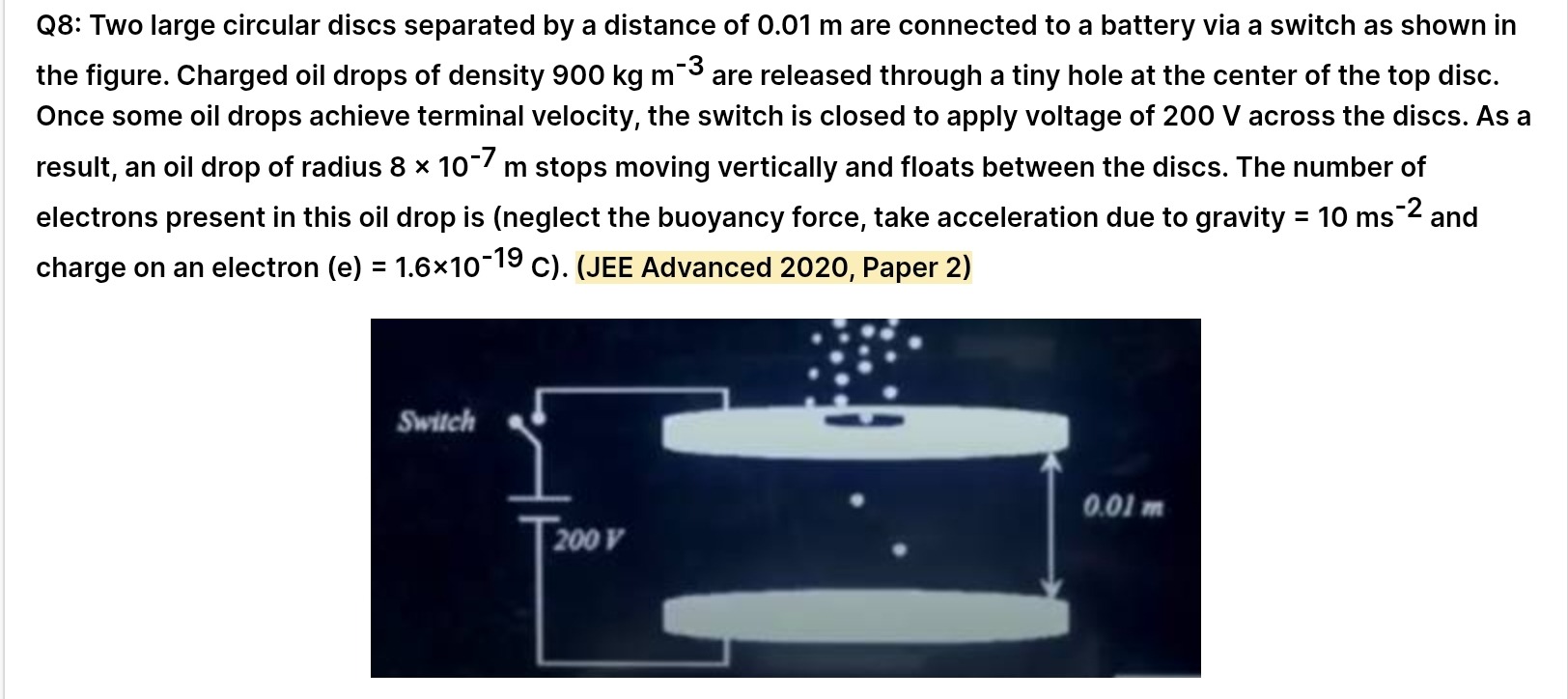Question
Question: Two large circular discs separated by a distance of 0.01 m are connected to a battery via a switch a...
Two large circular discs separated by a distance of 0.01 m are connected to a battery via a switch as shown in the figure. Charged oil drops of density 900 kg m−3 are released through a tiny hole at the center of the top disc. Once some oil drops achieve terminal velocity, the switch is closed to apply voltage of 200 V across the discs. As a result, an oil drop of radius 8 × 10−7 m stops moving vertically and floats between the discs. The number of electrons present in this oil drop is (neglect the buoyancy force, take acceleration due to gravity = 10 ms−2 and charge on an electron (e) = 1.6×10−19 C).

6
5
7
8
6
Solution
The oil drop floats, meaning the net force is zero. The forces are gravitational force (Fg) downwards and electric force (Fe) upwards.
Gravitational force: Fg=mg=ρVg=ρ(34πr3)g Electric force: Fe=qE=qdV
For equilibrium, Fe=Fg. qdV=ρ(34πr3)g
The charge q on the oil drop is due to n electrons, so q=ne. Since the electric force is upwards and the electric field between the plates is downwards (from positive to negative), the charge q must be negative. Therefore, ∣q∣=ne.
nedV=ρ(34πr3)g
Solving for n: n=eVρ(34πr3)gd
Given values: ρ=900 kg m−3 r=8×10−7 m d=0.01 m V=200 V g=10 ms−2 e=1.6×10−19 C
Substitute the values: n=1.6×10−19×200900×34π(8×10−7)3×10×0.01 n=3.2×10−17900×34π×512×10−21×10×0.01 n=3.2×10−171200π×512×10−21×0.1 n=3.2×10−17614400π×10−21×0.1 n=3.2×10−1761440π×10−21 n=19200π×10−4 n=1.92π
Using π≈3.14159: n≈1.92×3.14159≈6.03185
The number of electrons must be an integer. The closest integer is 6.
